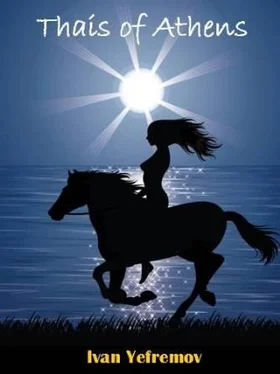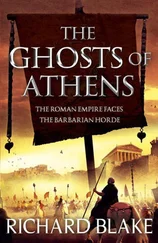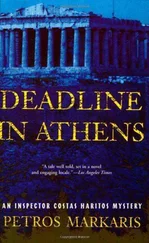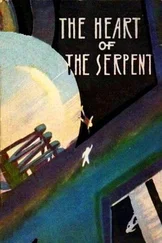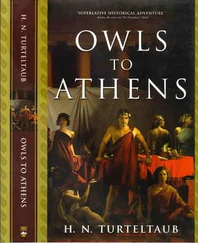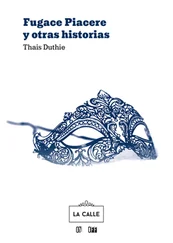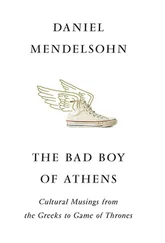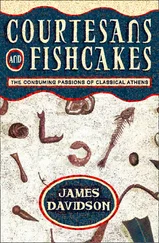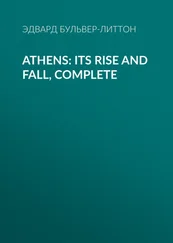Ivan Yefremov - Thais of Athens
Здесь есть возможность читать онлайн «Ivan Yefremov - Thais of Athens» весь текст электронной книги совершенно бесплатно (целиком полную версию без сокращений). В некоторых случаях можно слушать аудио, скачать через торрент в формате fb2 и присутствует краткое содержание. Издательство: Electronic edition, Жанр: Историческая проза, на английском языке. Описание произведения, (предисловие) а так же отзывы посетителей доступны на портале библиотеки ЛибКат.
- Название:Thais of Athens
- Автор:
- Издательство:Electronic edition
- Жанр:
- Год:неизвестен
- ISBN:нет данных
- Рейтинг книги:3 / 5. Голосов: 1
-
Избранное:Добавить в избранное
- Отзывы:
-
Ваша оценка:
- 60
- 1
- 2
- 3
- 4
- 5
Thais of Athens: краткое содержание, описание и аннотация
Предлагаем к чтению аннотацию, описание, краткое содержание или предисловие (зависит от того, что написал сам автор книги «Thais of Athens»). Если вы не нашли необходимую информацию о книге — напишите в комментариях, мы постараемся отыскать её.
Thais of Athens — читать онлайн бесплатно полную книгу (весь текст) целиком
Ниже представлен текст книги, разбитый по страницам. Система сохранения места последней прочитанной страницы, позволяет с удобством читать онлайн бесплатно книгу «Thais of Athens», без необходимости каждый раз заново искать на чём Вы остановились. Поставьте закладку, и сможете в любой момент перейти на страницу, на которой закончили чтение.
Интервал:
Закладка:
“I promised to see you some years later,” Cleophrades said in his deep voice. “Very well, two Olympiads have passed, and I now see not a girl, but a woman at the height of her strength and beauty. You must be about twenty-six,” the sculptor said, looking Thais over unceremoniously. “Have you given birth?”
“Yes,” Thais found herself replying obediently. “Once.”
“Not enough. Two would have been better. A woman of your strength and health would only benefit from that.”
“Gneziotes apamphoyn,” Lysippus said in the Attic dialect, pointing at Thais. She blushed from the direct gaze of one artist and the direct words of the other.
“Yes, you are right,” the stern Cleophrades agreed. “Purity of origin down both lines, father’s and mother’s. You shall be my model, Athenian. You were destined for me. I have waited patiently for your maturity,” he said, leveling an imperious gaze at Thais.
Thais paused, then nodded.
“Yet again you pick that which will not bring you wealth,” Lysippus mused. “Thais is too seductive for a goddess, too small and agile for a cora, and not menacing enough for a female warrior. She is a woman, and not a standard established in Helenian art over the centuries.”
“I think you are both right and not right, great master. When you created your Apoxiomenes, the image of an athlete, you bravely departed from the standard set by Polycleitus, and even more so by Doriphorus. And I understand why. Doriphorus’ standard was that of a mighty Spartan, a warrior created by Lacedemonians over millennia of parental selection, the killing of the weak, and the harshest development of strength and stamina. Huge chests and incredibly thick stomach muscles, especially the obliques. Such man can run for many stadiums in heavy armor, carry a massive shield into battle as well as a spear longer than that of any other warrior, and survive being run over by a heavy cart. Until the invention of heavy bows and slingshots, Spartans defeated all enemies without exception.”
“You understood me well, Cleophrades, although you are a sculptor of women. My Apoxiomenes is lighter and more agile. Now, however, everything has changed again. More soldiers fight on horseback, and infantry no longer fight one to one, but in hundreds of soldiers, forged into one machine by discipline and the ability to fight side by side. The times of Doriphorus and Apoxiomenes are over.”
“Not entirely, Lysippus,” Thais said. “Think of Alexander’s guards who earned the title of ‘Silver Shields’. They required heavy armor, swift step, and strong strike.”
“You are correct, Athenian. But that is a special part of the army, akin to battle elephants, and not the majority of soldiers.”
“Battle elephants. What a comparison,” Thais said. She laughed, paused, then added, “Still, I knew one Spartan. He could have been a model for Doriphorus.”
“Of course such men still exist,” Lysippus agreed. “They became a rarity because they are no longer needed. Too much is required to create them, and it takes a long time. The army requires more people now and as quickly as possible.”
“We speak of men,” Cleophrades rumbled. “Was that why we invited Thais?”
“Yes,” Lysippus said, then caught himself. “Thais, help us. We started a dispute about a new statue with our guests.” The sculptor pointed at a group of four men with thick beards and strange head wraps, who stood separately from the regular visitors. ”They are Indian sculptors, and we disagree in the key criteria of feminine beauty. They reject the outstanding charm of the statue by Agesander, and believe that the modern fashionable sculptures represent a wrong trend. Is that so?” He turned to the Indian and one of them, apparently an interpreter, quickly said something in a lovely fluid language.
One of the guests, the one with the thickest beard, nodded energetically and said through the interpreter, “Our impression is that the Helenian artists no longer love women. They love men more.”
“That is an odd impression.” Lysippus shrugged, while Cleophrades grinned broadly and with a hint of menace.
“I don’t know anything,” Thais said. “Who is Agesander, and what is this statue?”
“He is a new sculptor and a great master,” Lysippus explained. “His statue of Aphrodite for a temple in Melos [33] Aphrodite of Melos by Agesander is what will later become known around the world as Venus de Milo.
became famous among other sculptors, although I find her more similar to Hera.”
“The model was not a Helenian woman, but more likely a Syrian. These women have beautiful breasts and shoulders, but lack waist and have a flat flabby bottom. Their legs are always disproportionately thin,” Cleophrades said.
“Agesander had skillfully draped all that,” Diophosus said, who was also a sculptor and Thais’ acquaintance.
“But he failed to hide the awkward lower body,” Lysippus objected. “And a poorly developed lower belly.”
“I do not understand all the praises,” Cleophrades said calmly. “I do not deny Agesander’s skill and have no envy of his great ability, I only dislike his choice of model. Does his goddess have a Helenian face? He gave her a classic profile, but the bones of her head appear fragile and narrow, as is common for a Syrian or any other woman from the eastern shores. Had no one noticed how closely set her eyes were and how narrow her jaw?”
“What is so bad about that?” Stemlos asked with a chuckle.
“It is bad even for your horses,” Cleophrades retorted. “Remember Bucefal’s broad forehead. And for us Helenians, ancient Cretans, and Egyptians, the favorite image is Europa. You can translate this ancient name as you wish: euryopis, wide-eyed or europis, wide-faced, and it is more likely to be both. Europa’s bones are still carried around in a huge myrtle wreath during the Ellotia celebration on Crete. We artists should pay more attention to our women and foremothers, instead of flaunting the foreign models. They are quite lovely, but ours are more beautiful.”
“Good health to you, Cleophrades,” Lysippus exclaimed. “One of the many nicknames of my friend Thais is ‘wide-eyed one’. Have you noticed how similar she is to Athena Parthenos by Phidias? You know the one. She was the model for several copies. She wore a crown and had eyes made of chrysolite.”
Much to the surprise of all present, the Indians started bowing with their hands folded and exclaiming something in approval.
“Good for you, euryopis,” Lysippus said. He smiled at Thais, then glanced at Eris and added, “We asked you here to serve as a model for our debate. You and Eris will have to pose nude. We want to see in you the combination of the ancient Cretan and our Helenian blood. Eris too combines two lines: ancient Nubian and another one, possibly Libyan.” He pointed at the broad heavy stool for modeling. Thais obligingly dropped her clothes into the arms of the patient Eris. A sigh of admiration rushed through the studio. Everyone here adored feminine beauty and valued it as the greatest natural treasure.
“Morphe teliteres goetis! Oh, the enchanting, thrilling feminine form,” one of the young poets exclaimed.
Cleophrades froze, his left palm pressed to his temple, his eyes leveled on the copper tanned figure. Thais stood as easily as if she were alone with her mirror and not on a stand before a group of strangers. Calm certainty in her own perfection and in the fact that she inspired nothing but admiration among the artists, surrounded the young woman with an almost tangible aura of the immortal gods.
“Have you found what you were looking for?” Lysippus asked.
“Yes,” Cleophrades almost shouted.
The Indians were startled and looked with surprise at this Helenian, suddenly consumed by inspiration.
Читать дальшеИнтервал:
Закладка:
Похожие книги на «Thais of Athens»
Представляем Вашему вниманию похожие книги на «Thais of Athens» списком для выбора. Мы отобрали схожую по названию и смыслу литературу в надежде предоставить читателям больше вариантов отыскать новые, интересные, ещё непрочитанные произведения.
Обсуждение, отзывы о книге «Thais of Athens» и просто собственные мнения читателей. Оставьте ваши комментарии, напишите, что Вы думаете о произведении, его смысле или главных героях. Укажите что конкретно понравилось, а что нет, и почему Вы так считаете.
